November 11, 1947. The Cenotaph was then located beside the old Post Office at the corner of Prescott and Reuben Streets in Kemptville.
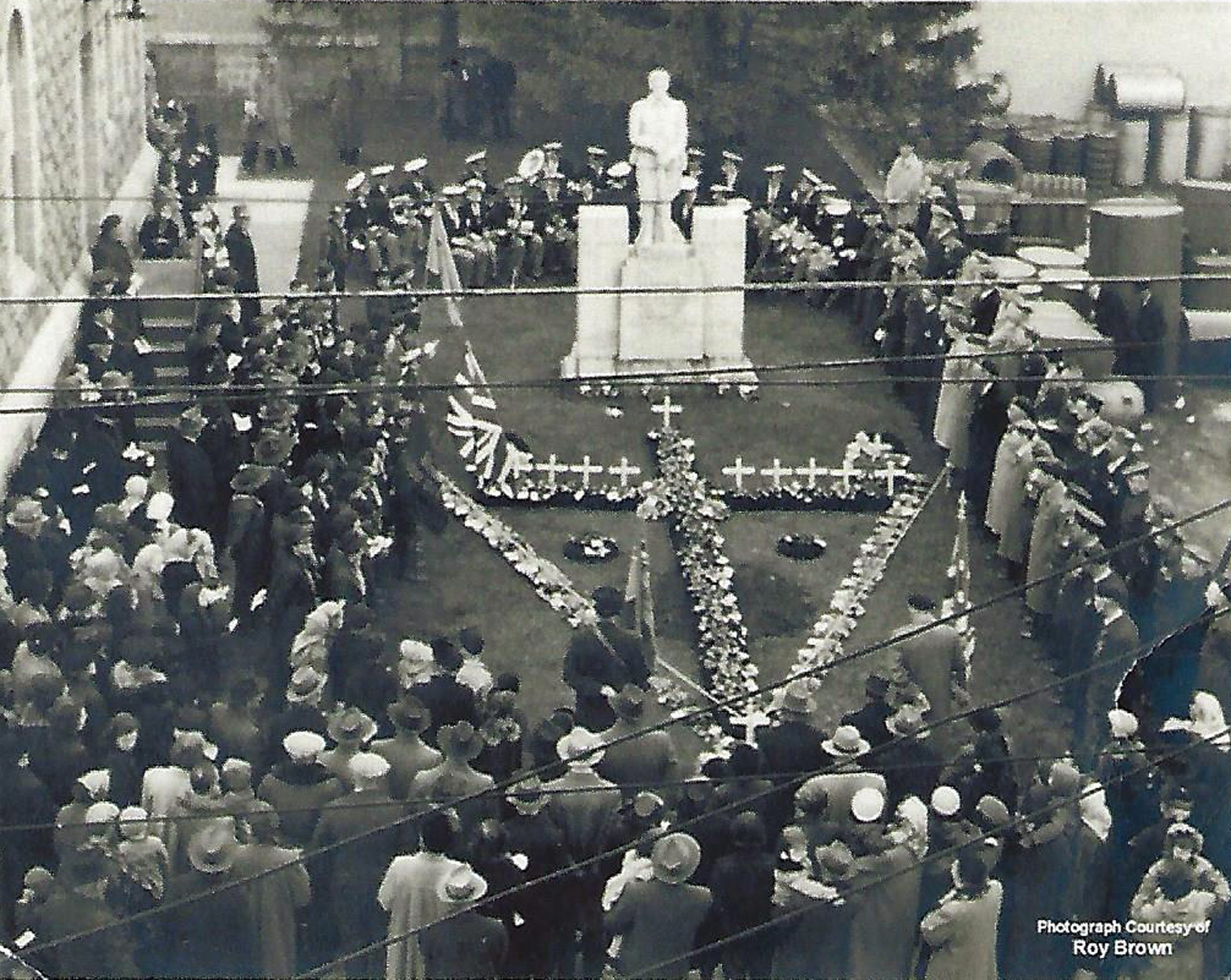
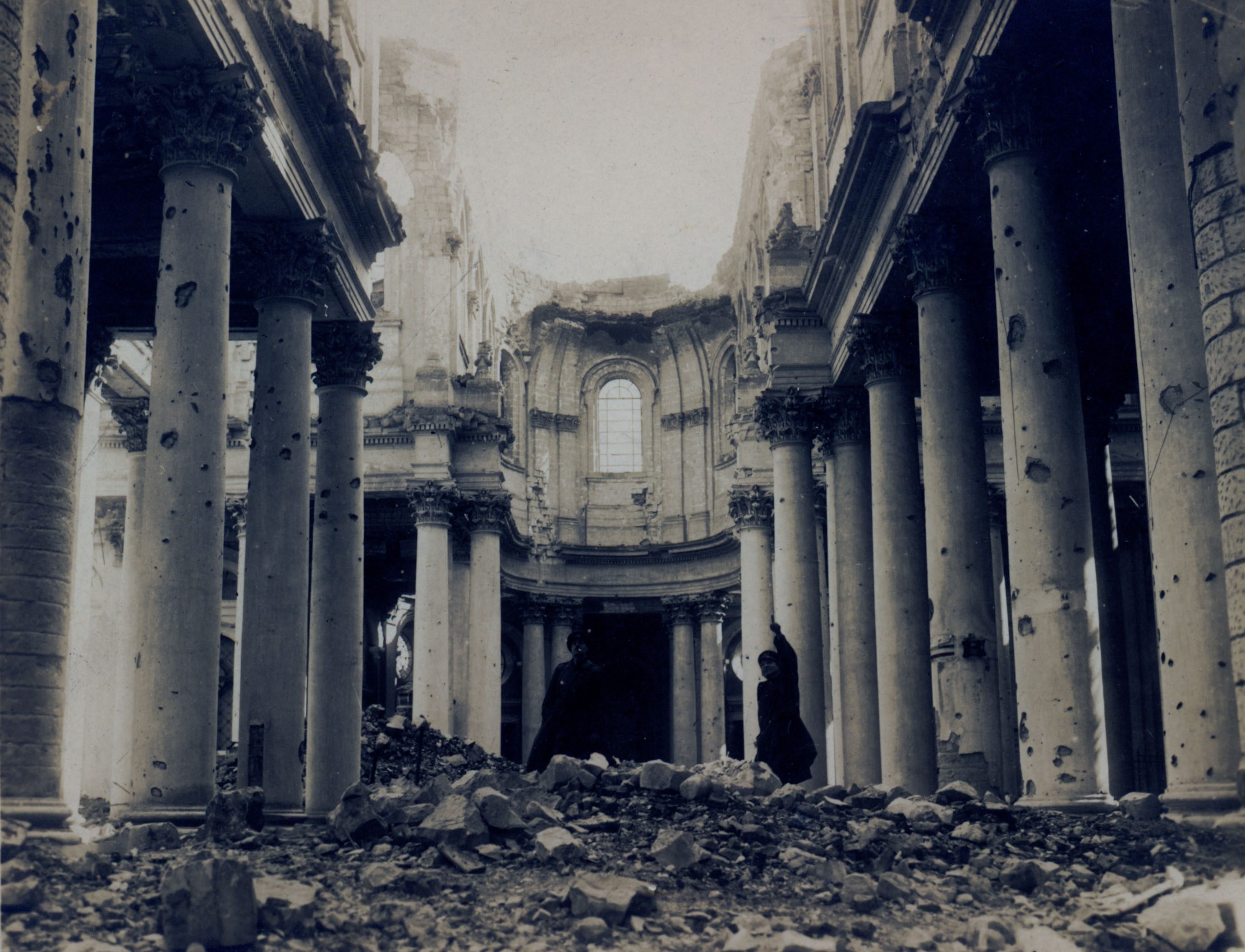
The Altar-Arras Cathedral
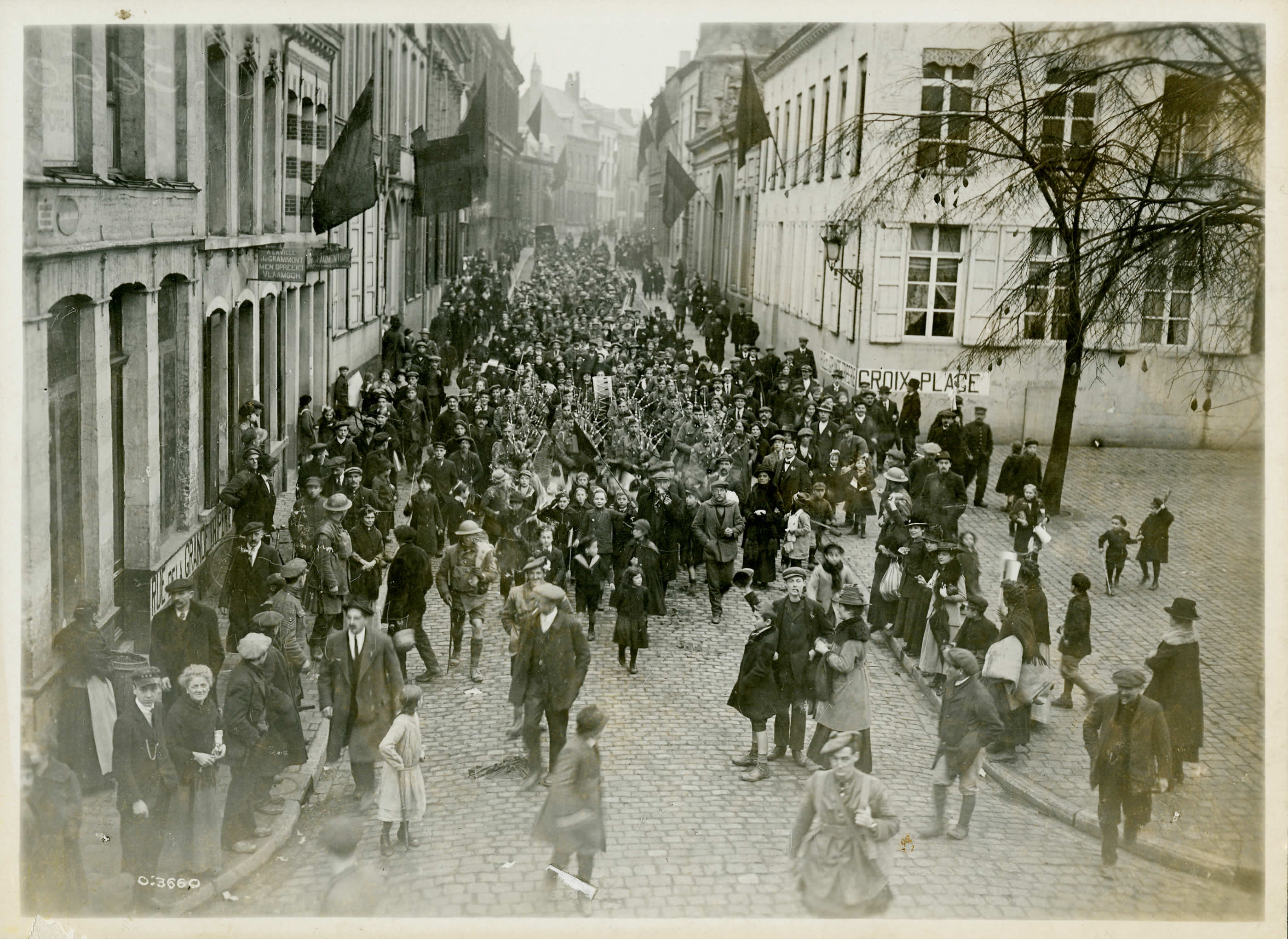
Canadians marching into Mons, CWM eo-3660
Canadians liberated Mons on the last day of the war
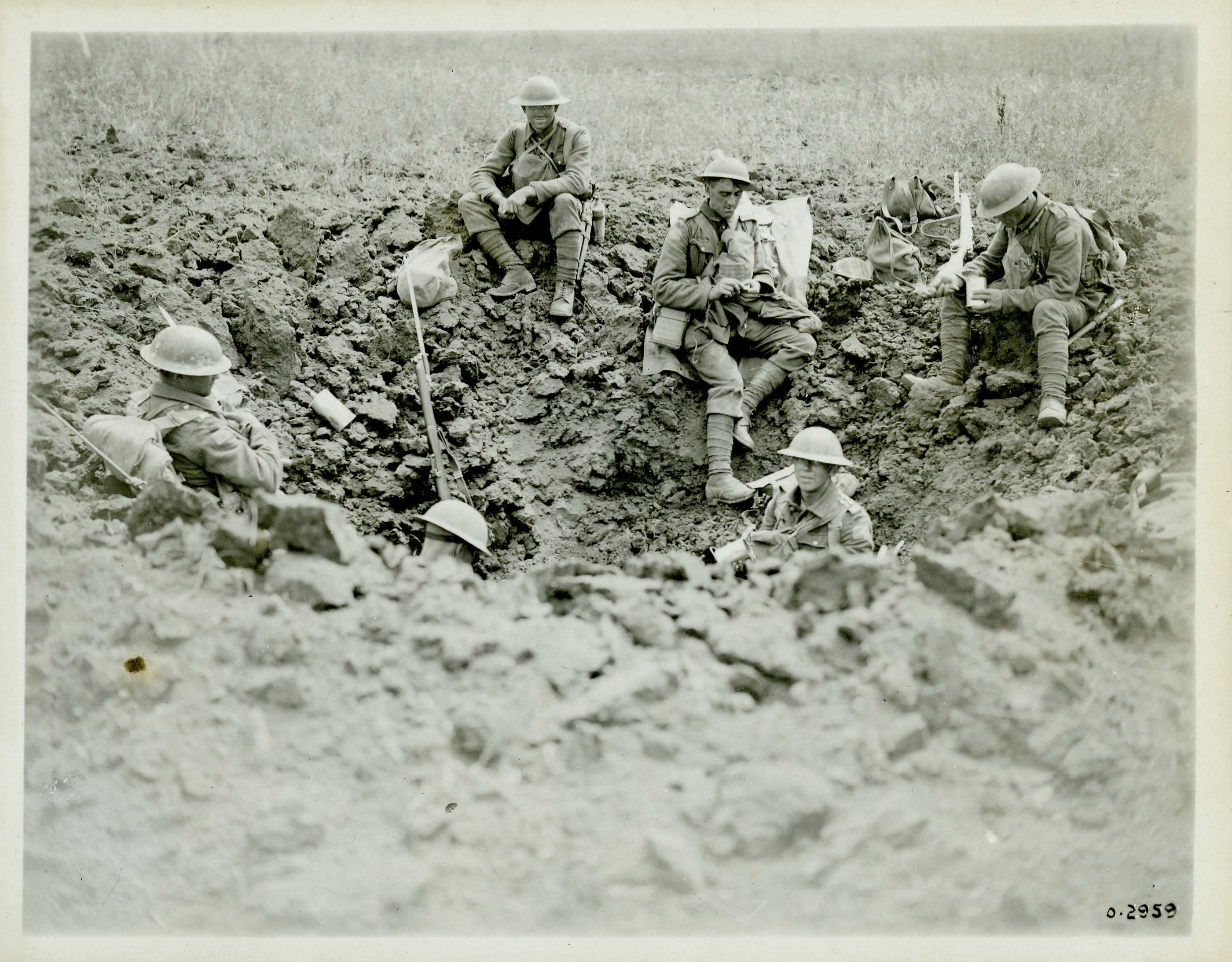
Resting in a shell hole, Amiens, 1918 Canadian War Museum eo-2959.jpg
The Spanish Influenza Pandemic of 1918
by Lynne Clifford-Ward
It is a century since The Great War came to an end on November 11, 1918. However, for battle weary soldiers and exhausted, displaced civilians, another colossal, but silent enemy presented itself: the Spanish Influenza pandemic of 1918. It is estimated that this flu killed a staggering 50 to 100 million people across the globe.
Troops returning home by ship transported the deadly flu to Canada. It swept across the country within a week, claiming a thousand lives a day. Unlike most flus, which target the young and the elderly, it struck those aged between 20 and 40, the very demographic already decimated by the First World War.
By October, 1918, the flu was claiming 1,000 lives a day; some 50,000 people died in Canada. In Ontario alone, 8,705 deaths were recorded. Measures such as shutting down schools and public transportation and forbidding public gatherings were not enough to prevent the spread of this virulent Spanish flu. Medical systems, funeral homes and civil authorities were overwhelmed with the scope of the disease, which could result in death in 24 hours from the onset of horrific symptoms.
In North Grenville, we were not spared the scourge of this deadly pandemic which continued until a third wave in the spring of 1919 – in some places, 1920 – and then the virus finally, and thankfully, weakened.
Some of our local Spanish flu victims included Andrew John Kerr, Captain of the Kemptville Fire Brigade and James Raymond Eager, farmer and choir member (both are memorialized in the stained glass windows of St. James Anglican Church, Kemptville); 14 year old Lizzie Walker, and Mary Hutchins, spouse of Major Horace Hutchins, who was killed while serving with the 109th Canadian Infantry Battalion, Canadian Expeditionary Force (CEF) at Vimy.
North Grenville Deaths
John Moran, died September 2, 1918, aged 17.
Military Medal. Service No. 640112.
He was from Oxford Station, where he worked in farming. Before he left for overseas in April, 1916, he was put in detention for 168 hours. He was declared a deserter in September, 1916 and medically declared mentally deficient by doctors in May, 1917. He was charged in August, 1918 with “speaking in an improper manner to a coloured soldier”. This did not keep him from the trenches, and, in September, 1918, he was “Killed in Action. Whilst with his section in a shell hole five hundred yards in front of Vie-en-Artois on 2nd September, 1918, at about 7.30 p.m., he stood up to see what was going on and was wounded by an enemy rifle bullet. He was given immediate attention but died shortly afterwards.”
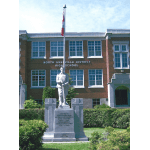
Andrew Leslie Scott. Died on October 2, 1918, aged 19.
Andrew had been born in Scotland but had been living in Bishops Mills at the McCoy farm for a number of years. He joined up in January, 1916, but only arrived in France in March, 1918. On October 2, he “died of wounds received in action”. An obituary said of him: “He was of a particularly cheerful disposition and his death at the early age of 19 years is much regretted”.
Sergeant James Arnold Dillane, died August 10, 1918, aged 21.
Service No. 3309.
Son of William and Mary Dillane, Kemptville. Student. While training in Canada, he was promoted to Corporal, but reverted to Private at his own request, before going to France. There, he was promoted to Sergeant. “He was last seen about 8.30 on the morning of August 10, 1918 during an attack through Rosieres to Chilly. An Enemy counter attack took place about one half hour later and no information has since been received concerning him.” A later notation in his records states: “Previously reported missing, now for official purposes presumed to have died”.
John Arthur Jeffrey. Died March 16, 1918, aged 21.
Service No. 639597.
John Jeffrey was born in Lincolnshire in England, but was living in Kemptville and working as a farmer, when he enlisted there in February, 1916. John arrived in England in October, 1916, and joined his unit at the front in June, 1917. He was wounded in the upper lip on January 11, 1918, but it was not serious enough to keep him from the front line, and he was returned to his unit two weeks later. Just two months later, he was killed in action in the trenches in the vicinity of Lens.
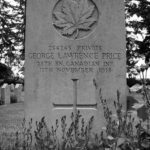
George Lawrence Price, last soldier killed in WW1
George Gordon Howey, died October 15, 1918 of flu [Bronchial pneumonia].
Service no. 503199.
George was born in Kemptville and enlisted in Ottawa in February, 1916. He served as a driver in France, and had been hospitalised with influenza in 1917. He was awarded the Military Medal in March, 1918, for gallantry in the field. George was wounded in the
field on September 6, 1918, and became dangerously ill with Bronchial Pneumonia on October 14, and died the next day.
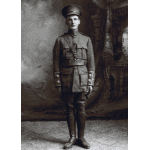
Thomas James Beckett, died October 3, 1918, aged 22.
Service No. 2255301.
Born in the Township of Oxford, but living in Kemptville at the time he enlisted. Son of Lt.-Col. David Wellington and Margaret Beckett, living in R.R. 4, Kemptville. He was promoted to Corporal and arrived at his unit on March 3, 1918. Shot in the head on October 3 and died of wounds at No. 4 General Hospital, Camiers. In his will, he left everything to Miss Leila McGee of Chesterville.
Robert Jay Bennett, died October 19, 1918, aged 25.
Service No. 110036.
He was the son of Samuel J. Bennett of R.R. 2 Kemptville, and Margaret F. Bennett (nee Jackson). While working as a Civil Servant, he joined up in January, 1915. Robert was promoted to Sergeant and, in June, 1916, at the Battle of Ypres, he was shot in the ankle, breaking both bones. This put him in hospital for several months, before going on leave to Canada May 1, 1917. His leg injury left him unfit to return to the trenches and he was retained in Canada for Home Service. However, being away from the front did not mean he was safe. He died in Quebec, of influenza, one of the thousands to fall victim in Canada.
Ambrose Arcand, died August 8, 1918, aged 23.
Service number: 3320127.
Born in Kemptville, he was listed as an Iron worker in Renfrew when he signed up. Joined his unit at the Front on June 23, 1918, died less than two months later. He was wounded on August 7, 1918: “Died of Wounds (gunshot wound thigh) and No. 5 Casualty Clearing Station. This soldier was severely wounded during an advance on the enemy’s position near Marcelcave. He was taken to a Field Ambulance and later to No. 5 Casualty Clearing Station where he succumbed to his wounds the same day”.
John Edgar Arcond, died August 8, 1918, aged 24.
Service number: 246257.
Born in Kemptville, lived in Smiths Falls and worked as a labourer. “Killed in Action. This soldier was killed by an enemy sniper, while advancing between 1st and 2nd objectives near Beaucourt Wood”.
Cyril Douglas O’Leary, died October 1, 1918, aged 23.
Service No. 639598.
Cyril O’Leary was not a native of North Grenville, but was the son of Richard and Isabella O’Leary of Aylmer, Quebec. However, at the time he enlisted, he was working as a Bank Clerk in Kemptville. Joined his unit on March 26, 1918. “Died of Wounds”. “Was advancing with his Company in an attack and just after they reached the sunken road, about 200 yards from the Douai-Cambrai Road near the Village of Sailly, he was hit in the chest by a machine gun bullet. He was immediately attended to by a stretcher bearer and was conveyed to a dressing station, from there evacuated to No. 8 Stationary Hospital, Wimereux, where he succumbed the following day.”
John Allan Stewart, died September 2, 1918, aged 21.
Service no. 639919.
John was the son of William and Sarah Stewart, Kempton, Kemptville. When he joined up in March, 1916, his occupation was listed as Railreader. During his time in France, he spent much of his time in hospital with tonsilitis and mumps. He was in hospital for “hypertrophied tonsils” in March, 1918 and was discharged on March 11. Just two weeks later, he was wounded on March 24 in the right leg and foot. “This soldier died as a result of Bullet Wd received in the advance on Drucourt about 500 yds SW of windmill at Drury. His wounds were dressed, and he was removed to 12th Bde. F. A. where he died later in the day”. His pay was sent to Miss Carrie Storey in Kemptville.
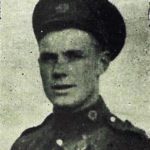
Robert Jay Bennett, died October 19, 1918, aged 25.
Service No. 110036.
He was the son of Samuel J. Bennett of R.R. 2 Kemptville, and Margaret F. Bennett (nee Jackson). While working as a Civil Servant, he joined up in January, 1915. Robert was promoted to Sergeant and, in June, 1916, at the Battle of Ypres, he was shot in the ankle, breaking both bones. This put him in hospital for several months, before going on leave to Canada May 1, 1917. His leg injury left him unfit to return to the trenches and he was retained in Canada for Home Service. However, being away from the front did not mean he was safe. He died in Quebec, of influenza, one of the thousands to fall victim in Canada.
Thomas Augustus (Tommy) Arcand, died May 29, 1918, aged 29.
Service number: 639859.
Born in South Gower. He was a farmer, married to Hattie Jannock. He was wounded in his left hand back on November 2, 1917. Returned to his unit December 4. Wounded in thigh and face by shrapnel on May 28. Died next day. “Died of Wounds (Shrapnel wound left thigh and face) in No. 6 Casualty Clearing Station.”
biographical notes by David Shanahan
Merrickville-Wolford deaths in 1918
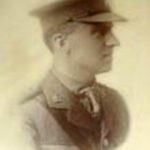
William Henry Davis was born to James and Anne Davis of Davistown, County Offaly, Ireland in January, 1883 and was an Anglican chaplain. He enlisted March 6, 1916 in Edmonton, and was awarded an Honorary Captain position. He headed to France and was assigned to the HQ initially, and then joined the 8th Brigade on March 13, 1917. William Davis was awarded the Military Cross for conspicuous gallantry and devotion to duty on Jan 18, 1918. He went into No Man’s Land during the battle involving the 8th infantry brigade, searching and organizing stretcher parties under heavy shelling and machine gun fire while in full view of the enemy.
In March, the 8th Brigade advanced to Bocourt with little resistance and few casualties. It was reported the road ahead of them had been captured, so a French battalion was sent to swept the area before starting the advance on Le Quesnel. As 8th Brigade moved forward with William, they suddenly came under intense machine gun fire. The Germans were missed by the French sweep and the 8th Brigade was not using cover. Casualties were very high before the Germans were overrun.
William Davis died August 9, 1918 south of Folies while officially with the 4th Canadian Mounted Rifles, at the age of 34. He was coming to the battlefield with a stretcher party from the Le Quesnel Hospital when an enemy shell exploded at his feet killing him instantly.
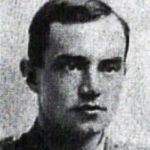
Lt Stanley Bliss Tallman was born May 19, 1892 to Esley Hardy and Frances Maria Devitt Tallman in Merrickville, ON. He was the youngest of three children including Harold and Hardy. His father was merchant in Merrickville and lived beside the John Dunlop and Robert Walker families.
He enlisted on Sept 24, 1914 in Valcartier, Quebec at the age of 22 and assigned to the 6th Battalion. On June 8, 1915, he was assigned to the Royal Canadian Dragoons in France, and in January, 1916 he was promoted to Lance Corporal. In October, 1916, he was promoted again to Corporal with the RC Dragoons, and promoted to Lieutenant on April 9, 1918. On April 29, 1918 he went back to the RC Dragoons in France.
On October 6, he was reported as seriously ill with pleurisy; three days later this was changed to dangerously ill, and on November 2 he was diagnosed with bronchial pneumonia. Lt. Tallman died November 5, 1918 with Broncho-Pneumonia at the 3rd London General Hospital while with the Royal Canadian Dragoons of the 1st Armoured Regiment. He was buried at the Canadian Military Hospital in Brookwood, Surrey. He also has a grave site at the Wolford Rural Cemetery at 705 Kilmarnock Rd.
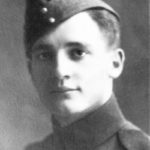
2nd. Lt. Claude Edmond Watchorn, born in Merrickville, died June 17, 1918, aged 20. He was the son of George E. and Juliana Watchorn, of 1232-15th Avenue West, Calgary, Alberta, Canada. Born at Merrickville, Ontario. He was a Second Lieutenant in the Royal Air Force. Claude Watchorn and Alexander McGillivray were on a training flight in a biplane from Shawbury in Shropshire. They had to made an emergency landing near Thorneycroft Hall. The local landowners, the Bickerton family, took them in until their plane could be repaired and became friendly with them. Subsequently the pilots made more visits to the Bickertons. When the pilots were scheduled to go to France they decided to visit the Bickertons to say goodbye, but as they came into land the wingtip touched a flagpole stay and they crashed. Alexander died the same day and Claude the following day. They are buried at Siddington Church and two oak trees were planted near the crash site to commemorate them. Edmond is commemorated on a plaque in Holy Trinity Church, Merrickville.
from the Merrickville Heroes of WW1, at: www.merrickvillesheroes.





